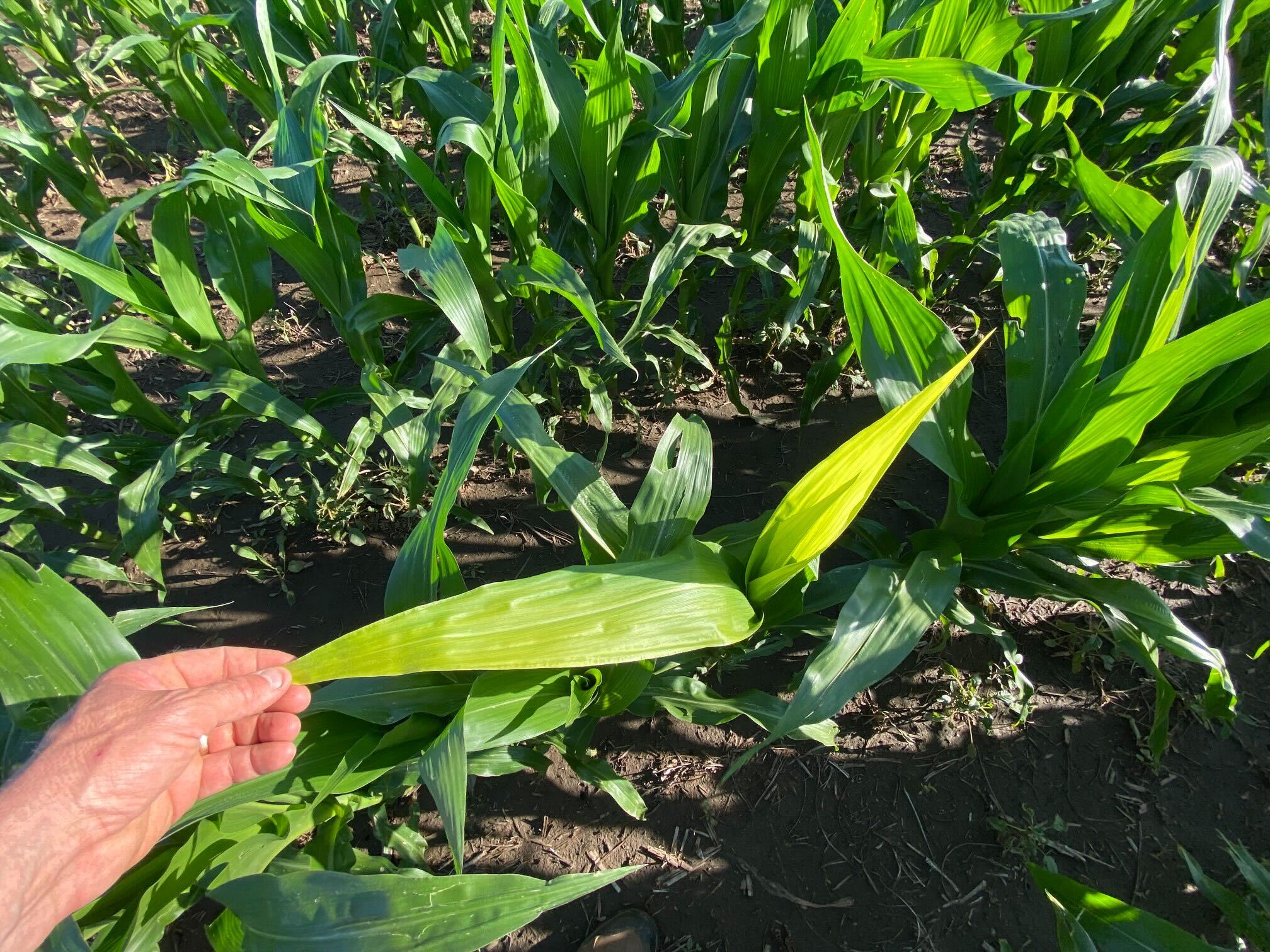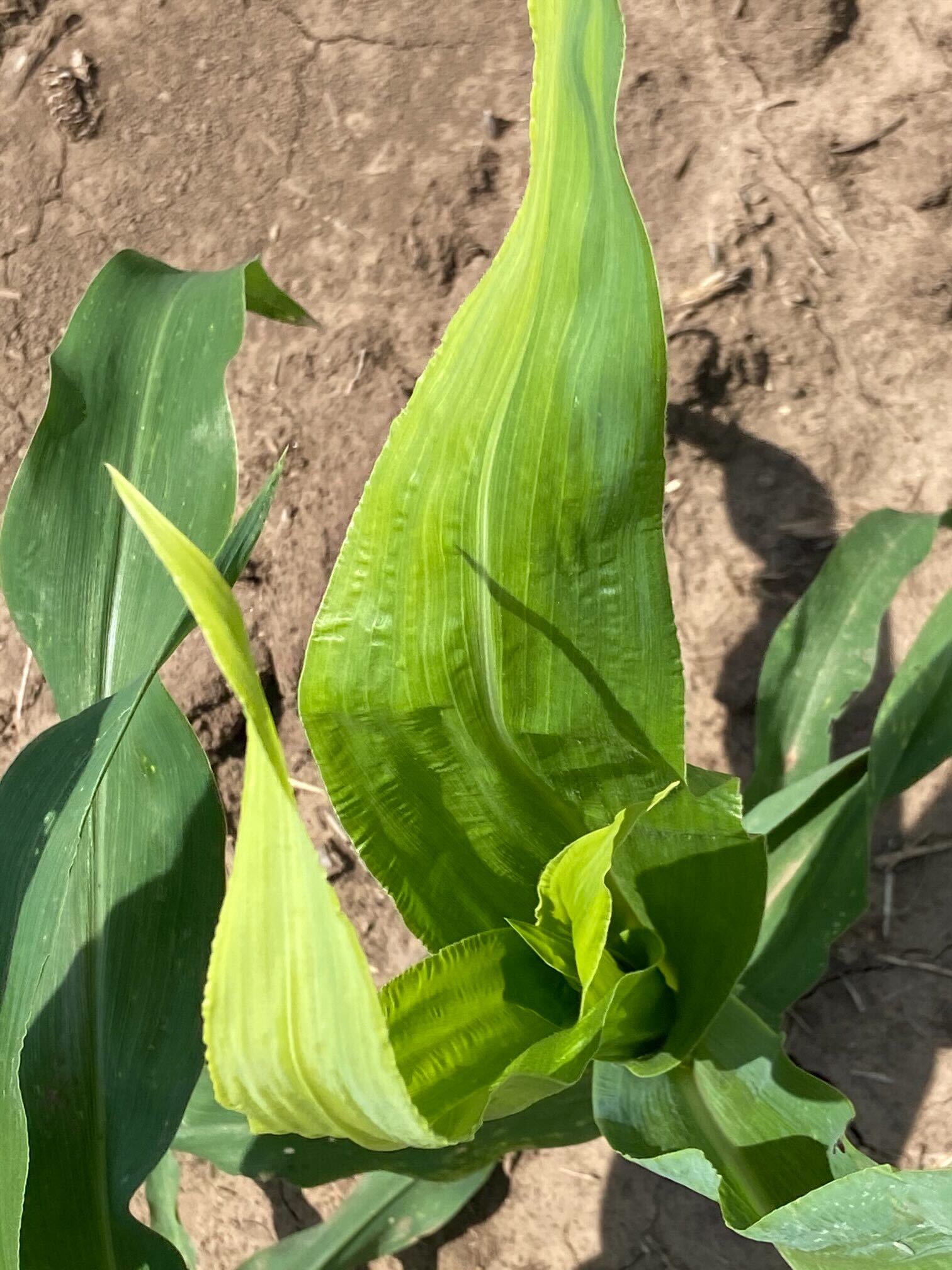UNDERSTANDING RAPID GROWTH SYNDROME IN CORN: CAUSES, IMPACTS, AND SOLUTIONS
As the planting season concludes in AgriGold regions, crops are entering key vegetative stages. And during this phase, it’s crucial to watch out for a phenomenon known as rapid growth syndrome (RGS).
RGS arises when warm or humid weather conditions foster accelerated growth in corn plants. This condition is characterized by rapid cell elongation. These rapid growth periods can increase internodal space and potentially make plants more susceptible to early-season greensnap (brittlesnap).
WHAT IS RAPID GROWTH SYNDROME?
Rapid growth syndrome (RGS) is also known as accelerated growth syndrome, buggy whipping, twisted whorl syndrome, wrapped whorls, and onion leafing. It’s a physiological disorder characterized by rapid stem elongation, twisted and curled leaves and whorls, and the development of a “buggy-whip” appearance in the upper leaves.

While RGS typically does not cause significant yield losses, severe cases can lead to plant lodging, which adversely affects harvest.
Many mistake RGS in corn for herbicide injury, as both conditions can lead to discoloration and stunted growth. However, herbicide injury typically shows in a distinct pattern caused by spray overlaps or chemical burns from close application. RGS does not exhibit any specific pattern.
If you spot crop symptoms but aren’t sure of the underlying cause, seek advice from an AgriGold agronomist. Our team’s expertise can help accurately diagnose the issue and determine appropriate measures to address it.
WHAT IS THE IMPACT?
Typically, RGS in corn does not lead to substantial yield losses. In the majority of instances, the affected whorls will eventually unfurl, and growth will proceed normally. A few days of sunlight exposure will restore their green color, rendering the issue no longer visible. There might still be some slight leaf edge crinkles caused by their constrained expansion within the twisted whorl.
Nevertheless, in severe instances, RGS can contribute to plant lodging. This can compromise grain quality and lower harvest efficiency. Plant lodging not only hampers farmers’ ability to navigate through the fields during harvest but can also cause damage to equipment.
WHAT CAUSES IT?

RGS is marked by tightly wrapped and twisted leaves that struggle to uncurl. This phenomenon commonly takes place during the V5 to V6 stage of corn growth. Here, the lower leaves maintain their normal appearance, while the sixth or seventh leaf wraps tightly. Despite the young leaves’ ongoing growth within the whorl, they struggle to emerge through the tightly wrapped upper leaves. This leads to increased pressure within the whorl, ultimately bending or kinking the affected region.
RGS frequently happens when corn plants transition from slow growth periods (characterized by cool and cloudy days) to rapid development phases (with warm, sunny conditions). While certain herbicide groups like cell growth inhibitors (Group 15) or growth regulators (Group 4) can induce twisted whorls in corn, RGS has also been observed in numerous fields without these herbicide classes. Moreover, the occurrence of twisted whorls can differ among hybrids, as each hybrid possesses its own distinct growth characteristics.
THE BOTTOM LINE
- RGS is marked by tightly wrapped and twisted leaves that fail to uncurl properly, resulting in a “buggy-whip” appearance in the upper leaves.
- RGS is most common in cornfields during periods of rapid growth and warm, humid weather conditions.
- Although RGS does not typically cause significant yield losses, severe cases may result in plant lodging, which can impact harvestability.
- Proper management of nutrient imbalances and excessive nitrogen fertilization can help reduce the incidence and severity of this disorder in corn.
If you’re experiencing crop symptoms similar to those of rapid growth syndrome, consult an AgriGold agronomist for expert guidance. To minimize the incidence and severity of this disorder in corn, farmers should monitor nutrient imbalances and limit excessive nitrogen fertilization.



